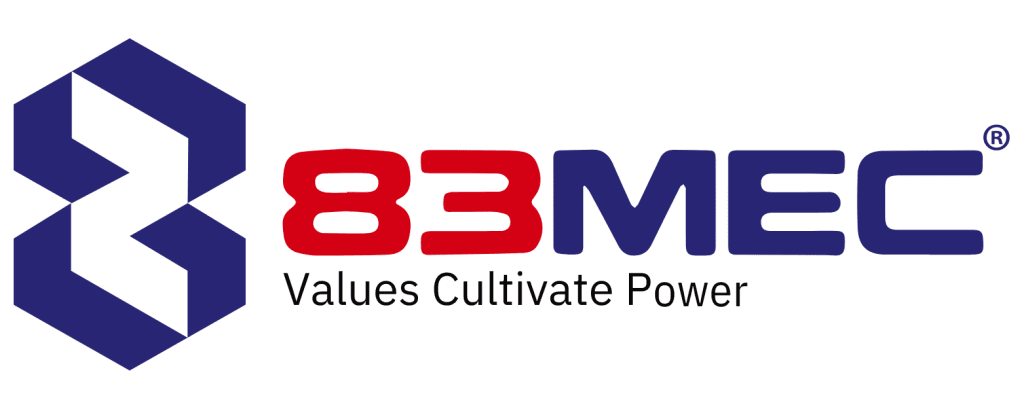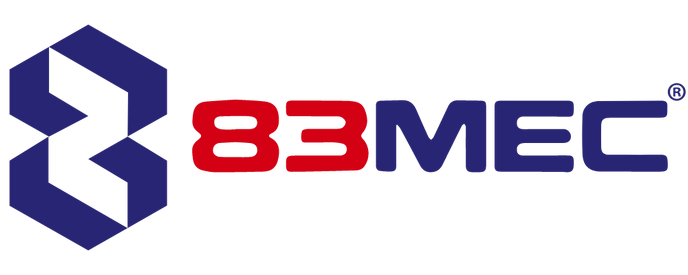Prior to electrostatic painting, metal surface processing or metal and plastic surface treatment are frequently of interest. This is the process that makes the surface of the product uniform and smooth prior to powder coating or plating. At that time, powder coating on products (such as steel, stainless steel, plastic, aluminum, and corrugated iron) will be more robust.
In this article, 83MEC will discuss the surface treatment of a particular material, steel. With modern technology, production lines, and processing, it is currently possible to meet all product surface specifications. Therefore, let’s examine steel surface treatment before powder coating.
1. Knowledge of powder coating
When the craftsman applies a layer of electrostatic powder coating particles to the product’s surface, this is an advanced technique. After being heated, the charged powder coating particles that adhere to the product surfaces will combine into a smooth and thin coating. The result will be a product with a uniform, smooth surface, and high durability.
2. Process preceding application of powder coating
Surface preparation:
- Process of mechanical cleaning: Abrasive cleaning removes contaminants from the product’s surface (metal). In addition, remove the surface’s inherent abnormal scratches. After this cleaning step, the product’s surface will be highly reactive and susceptible to premature corrosion. Therefore, move swiftly to the next steps.
- Chemical cleaning removes dirt, grease, and even oxidation stains from the surface—various chemical application methods, including spraying, dipping, and wiping. Depending on the product’s surface properties, the appropriate chemical will be chosen.
Toggle overlay:
- Purpose 1: The coating will provide temporary corrosion protection during the pre-coating process.
- Create a base to increase the powder coating layer’s adhesion.
- Protect against paint corrosion Consequently, it is possible to improve (extend) the powder coating’s durability in the future.
The appropriate type of conversion will be used based on the properties of the painted metal.
3. Before powder coating, learn about the steel surface treatment procedure.
Steel is renowned for its material properties and susceptibility to air-borne oxidation. On their surface will be deposited material (oxide formation). In addition, they must clean the surface when matte oil or rust is present.
For steel materials to avoid the oxidation process, we apply a method that prevents them from coming into direct contact with air. Most commonly, anti-rust oil is applied to the surface of steel materials. At that time, air will not be in direct contact with the steel, thereby reducing the oxidation rate. We emphasize that this process “slows down,” but does not eliminate the issue of rusting materials entirely.
The aforementioned issues must be “solved,” i.e., rusted steel, grease, and black residue. They will be the source of deteriorating link conditions. Therefore, conversion coatings are in demand in the steel industry. The procedure is as follows:
- Cleaning: We must decrease (remove the layer of grease from the steel surface) using a solvent-based degreasing kit, alkaline degreasing powder, or acid degreasing.
- Remove corrosion and scale from steel: Unlike degreasing, these are essential acidic chemicals. They result from adding inhibitors to acids such as sulfuric acid, phosphoric acid, and hydrochloric acid. The higher the acidity, the quicker the rust will be removed, but it has a negative impact on the product’s surface quality. Consequently, the rust removal procedure must strictly adhere to the technological procedure.
+ Learn about steel coating transitions: Currently, there are two types of coating conversions called zinc phosphate coatings and iron phosphate coatings, respectively. Iron phosphate coatings are commonly used for many products that require a corrosion-resistant painted surface not exposed to severely corrosive environments based on their properties.
4. Surface treatment of steel following coating conversion
After the surface of the steel has been converted, it is necessary to rinse the surface with water to remove any remaining unreacted chemicals. This provides more significant corrosion and moisture resistance than coatings that do not require recoating.
5. Pretreatment procedures for steel
The 7 (or 8) step steel pretreatment for zinc/iron phosphates consists of the following procedures: Degreasing = Draining = Polishing = Draining = Phosphating = Draining = Draining = Polishing Passivation = Evaporation
This article provides information on the process of treating steel surfaces before powder coating. With more than four decades of experience in the industry, 83MEC is proud to be a reputable unit, producing products based on cutting-edge and modern technology while ensuring the highest quality at affordable prices.
Please contact 83MEC for quick informational support.





